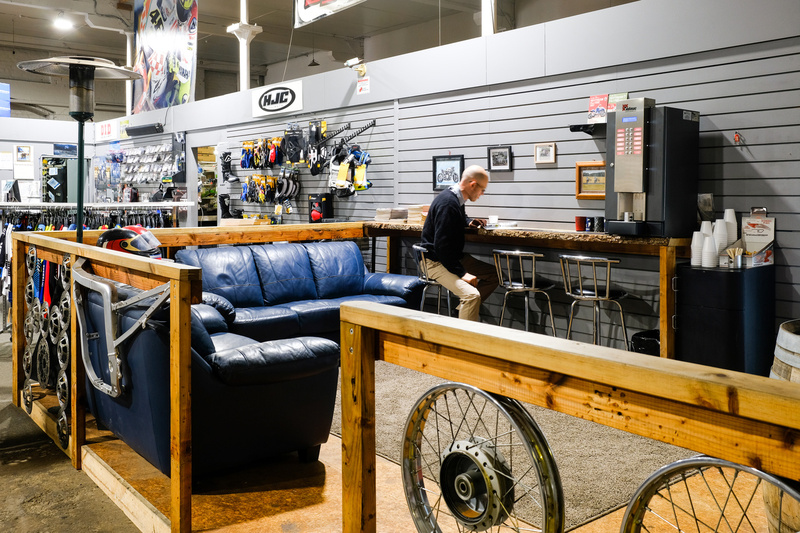Shop the very best MX Parts NZ for Your High-Performance Bike
Recognizing the Important Parts of a Motorcycle: A Comprehensive Overview for Fanatics
For motorbike enthusiasts looking to raise their riding experience and guarantee their bikes run efficiently, recognizing the essential parts of a motorcycle is critical. Each aspect, from the engine's complex operations to the essential function of the braking systems, not just affects efficiency yet also safety and comfort.
Engine Parts

The camshaft plays a critical role in controlling the timing of the engine's shutoffs, guaranteeing the accurate opening and closing required for reliable gas and air consumption, as well as exhaust expulsion. This timing is critical to preserving optimal engine efficiency and performance. Additionally, the carburetor or gas injection system, depending on the motorbike version, is responsible for blending air with fuel in the proper proportion for combustion.
The air conditioning system, either air or liquid-based, functions to maintain the engine's temperature within functional limitations, stopping getting too hot and guaranteeing durability - moto parts nz. Each part, meticulously created and incorporated, contributes to the seamless procedure of the engine, specifying the motorbike's power output and total efficiency
Transmission System
Indispensable to the motorcycle's capability, the transmission system guarantees effective power transfer from the engine to the wheels. This system makes up several essential parts, including the clutch, gearbox, and final drive, each playing an important function in converting the engine's power into motion. The clutch, normally operated by a hand bar, offers to disengage the engine and involve from the transmission, permitting smooth equipment modifications and regulated velocity.
The transmission, typically referred to as the transmission correct, has a collection of equipments that bikers can manually change with to adjust the bike's speed and torque result. These gears are organized in a series that enables the motorbike to increase smoothly and keep ideal engine performance throughout numerous speeds. The majority of motorcycles utilize a sequential gearbox, calling for the cyclist to change equipments in a predetermined order.
Braking Mechanisms
While comprehending the transmission system is essential to using a motorbike's power, equally essential is the ability to regulate and stop that power efficiently, which is where braking devices come right into play. Brakes are critical for security and efficiency, providing the rider with the needed control to navigate various terrains and conditions. Commonly, bikes feature 2 kinds of braking systems: disc brakes and drum brakes.
Disc brakes are more common in modern motorbikes as a result of their superior efficiency. They contain a brake disc, caliper, and pads. When activated, the caliper presses the brake pads versus the rotating disc, transforming kinetic power into warmth, thus slowing the wheel. This system provides far better warmth dissipation, regular efficiency, and improved quiting power, specifically in wet problems.
Alternatively, drum brakes, though less typical, are still discovered in some motorcycles. They function by pushing brake shoes versus the inner motorcycle frame sliders surface of a drum connected to the wheel. While usually less reliable in warmth dissipation and stopping power, drum brakes are easier and more cost-effective.
Understanding these stopping systems' nuances permits riders to preserve their motorbikes effectively and value the engineering that makes sure reliable and safe stopping.
Suspension and Steering
Suspension and steering systems are essential parts that dramatically influence a motorbike's handling and ride comfort. The suspension system, consisting of forks at the front and shock absorbers at the rear, takes in roadway abnormalities, improving security and control. Front forks, inverted or usually telescopic, compress and rebound to alleviate effects, while back shock absorbers maintain tire contact with the road, essential for traction and security.
Steering, focused around the handlebars, links the motorcyclist to the motorbike's directional control. The guiding head bearings ensure smooth procedure, permitting precise maneuverability. Correct positioning and maintenance of these bearings are important for predictable steering reaction and minimizing motorcyclist fatigue.
The suspension's adjustability is an additional important element; preload, damping, and rebound settings allow personalization to suit numerous riding designs and conditions. This adaptability is essential for maximizing performance, whether navigating metropolitan streets or taking on rugged trails. Innovations like digital suspension systems provide real-time adjustments, boosting experience quality throughout varied terrains.

Electric Solutions
After ensuring a regulated and smooth trip via effective suspension and guiding systems, focus transforms to the electric systems, a critical facet of contemporary motorcycles. These motorcycle gas cap systems play a crucial function not just in starting the engine however also in powering different parts that enhance the capability and safety and security of the motorcycle.
At the heart of a motorbike's electric system is the battery, which stores electric energy required for beginning the engine and powering supporting systems - moto parts nz. The generator or generator, paired with the rectifier-regulator, guarantees the battery stays billed while the motorbike is in procedure, transforming power into electrical power and maintaining voltage degrees
The ignition system, one more crucial element, is in charge of firing up the air-fuel combination in the engine's cylinders. Modern motorbikes commonly make use of a digital ignition system, providing higher effectiveness and integrity contrasted to standard systems.
Lighting systems, including headlights, tail lights, and indicators, are also essential, making certain visibility and safety for the cyclist. Extra digital elements such as sensors, control units, and displays add to advanced functions like fuel injection monitoring, anti-lock braking systems (ABS), and electronic control panels, even more improving the riding experience.
Conclusion
A complete understanding of a motorbike's vital components, consisting of the engine, transmission system, braking systems, suspension, guiding, and electrical systems, is essential for enthusiasts intending to optimize safety, convenience, and efficiency. Mastery of these aspects enables notified decisions concerning maintenance and upgrades, inevitably enhancing the riding experience. By integrating this expertise, motorcyclists can guarantee their motorcycles operate at peak effectiveness and dependability, thus taking full advantage of both enjoyment and long life of their automobiles.
For motorcycle lovers looking to elevate their riding experience and guarantee their bikes run smoothly, recognizing the vital elements of a bike discover this is critical.Integral to the motorcycle's functionality, the transmission system makes certain effective power transfer from the engine to the wheels.While comprehending the transmission system is essential to using a bike's power, equally crucial is the ability to control and stop that power efficiently, which is where stopping devices come into play. Commonly, bikes include 2 kinds of stopping systems: disc brakes and drum brakes.
A comprehensive understanding of a motorbike's crucial elements, consisting of the engine, transmission system, braking mechanisms, suspension, guiding, and electrical systems, is indispensable for enthusiasts intending to maximize comfort, performance, and safety.